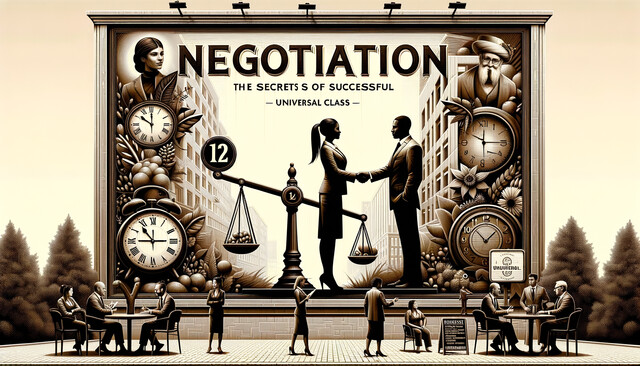The importance of implementing strategic marketing into your fundraising practices cannot be overstated. In this article, we will discuss the basics of writing a great grant proposal, how to utilize the media to get the word out about your organization, and the multitude of benefits offered by using direct mail phone-a-thons to solicit funds. Incorporating some, or all, of these marketing strategies into your plan will provide your organization with a variety of options to generate more revenue for your cause.
Writing a Winning Grant Proposal
Grants for nonprofits are a fantastic opportunity to create extra funding for your organization. While they cannot be depended upon to wholly fund your nonprofit, they can, and do, offer a substantial means of filling in the gaps in your donation dollars.
Once again, your mission statement and case statements will be of great service to you. They will aid you in explaining to those you seek grants from the what, why, where, and who of your organization.
Secondly you will want to research via the library or Internet the various corporations, foundations, and governmental agencies that offer appropriate grants for your specific organization.
There are nearly as many methods of grant proposal writing as there are grants themselves; however, there are some guidelines and tips that have proven to advance the chances of your organization winning that prized grant:
- Follow all instructions to the letter! If outlines or a series of questions are provided, follow the indicated order, answer each section, and avoid using evasive language.
- Use action words. Avoid the use of if , could, and might. Rather, state what you will do and can accomplish with said grant.
- Keep it short. Don't go overboard with the writing; keep it simple and stick to the required or recommended length.
- Tailor your document to each recipient. Don't send the same "template" proposal to each organization. Be sure to let the recipient know that you took the time to research their specific organization and use verbiage in your proposal that will make them aware of this.
- Get a second set of eyes to check your document. Before sending in your finished proposal, ask someone else to read it over carefully to be sure that you followed all the guidelines exactly. Also have them check for errors in grammar and spelling.
Utilizing the Media
The Benefits of Using Direct Mail
Direct mail has been utilized for years by both profit and nonprofit organizations. It really is a fantastic method of reaching new and established donors. Some go as far as to say that it is the most reliable, effective, and cost efficient means of soliciting funds for your cause. A few things to keep in mind when beginning this approach:
-
-
- Get a good list. If you don't already have your own list, there are many sources of "lists" to be purchased or had for free. Be sure to research the list provider carefully and be extra sure that the list is targeted at your desired audience! See the sources section of this lesson for some list providers.
- Think carefully about your direct mail piece. Sit down with your team and discuss how best to get your point across and request funds from your target donors. You may want to hire a professional company to put your direct mail piece together for you. Some companies that provide this service have been listed in the "sources" section of this lesson.
- Use strategy for deciding mail-out dates. Don't just send out direct mail pieces at haphazard times of the year. Be sure to plan your campaign around events and/or certain times of the year, so they coincide with your goals.
- Build your database from positive replies. When you do get a donation or reply, make sure to add that donor to your database. If a donor has found your cause worthy enough to offer funds, they very well might do so in the future.
- Don't abuse direct mail solicitation. Most folks will get seriously annoyed if they receive a direct mail solicitation from the same organization too frequently. Be sure to not inundate your kind and generous donors and turn them off to your cause in the process.
-
Working the Phones
Telephone fundraising or "phone-a-thons" as they are also called, are as popular, (if not more popular) than direct mail solicitation. They are a wonderful source of producing funds for your organization. They do, however, require more time, planning, and effort than direct mail fundraising does. You may pay a calling service to do the fundraising for you. Several such organizations can be found online.
- A plan sheet . Plan your phone blitz well. Be sure to set the date well in advance and steer clear of holidays. Pick a week night session, or a Saturday or Sunday session, and have all involved show up at least half an hour before the actual calling is to take place. Be sure to provide your volunteers with a copy of your plan sheet, and include the agreed donation goal at the top of the page.
- Phones . This seems like a no-brainer, but many organizations do not think to speak to their phone company to be sure their phone plan will accommodate this task cost-effectively. Also, you want to be sure that calling areas are appropriately spaced, so that volunteer callers do not disturb one another.
- A good basic script. Use your mission statement as your guide to create a simple script. Give a copy to each volunteer and provide them with alternative responses. A sample script appears in the resources section of this lesson.
- A donor "list" (see above,) or a copy of local phone books for each volunteer. If you have a donor list already, then great, use it! If it is short or you don't have one complied, then do it the old fashioned way, grab multiple copies of the local phone directory from your phone company. Be sure to section off a reasonable amount of potential donors for each volunteer, and ensure that their lists don't overlap.
- Volunteers who are patient and even tempered! Prepare your volunteers for handling rejection and even downright rude prospects. It is easy to get discouraged when several calls in a row are fruitless. Select a leader to keep track of successful calls, keep everyone on track, help motivate and remind volunteers of goals.
Here are some points to remember when hosting a phone-a-thon:
-
- Set a realistic goal.
- Appoint a leader to keep everyone motivated.
- Provide writing material or a computer to record info on "yes" replies.
- Have volunteers mark "maybe" prospects for call-backs at a later date.
- Limit calls to 5 p.m. to 8 p.m. on weekdays, and 3 p.m. to 6 p.m. on weekends.
- If a caller requests that you remove them from your list, respect such requests.
- Don't overuse phone-a-thons. Several per year should be your maximum.
Conclusion
Other Resources*
Breakthrough Thinking for Nonprofit Organizations: Creative Strategies for Extraordinary Results, by B. Ross and Clare Segal takes a creative approach to finding new ways for nonprofits to strategize.
Grant Proposals.com is a free website devoted to providing resources to both novice and advanced grant writers. Visit their site at www.grantproposal.com
There are several Internet media distribution outlets that are excellent free and/or low-cost resources for getting the word out on your fundraiser or organization; here are a few to get you started: www.prweb.com, www.ereleases.com, www.prnewswire.com.
Step-by-Step Fundraising has some great tips and advice on everything from phone-a-thons, to unique in-kind gift events; check them out at www.stepbystepfundraising.com.
Sample Phone Script:
Hi, May I please speak with ___________________? Hi, Mr./Mrs.___________my name is________________. I wanted to talk to you about ____________[organization], do you have a few moments? [Give the finer points of your group, then proceed with the following:]
I am calling today because we are trying to provide some great new services to the community you live/work in. With your donation, we will be able to provide [X, Y, Z] to those in need. [Give some specifics about programs]. I'm calling to ask if you'd like to become a supporter of ________________ by making a $XX.00 donation today. [pause and give them time to think, let them answer before you say anything].
If Yes:
Great! Do you have a pen? You should make your check payable to: ________________. You can send the check to: ________________.
(Or, alternatively, you will send them a self addressed stamped envelope for their donation to be sent back to you.)
[Thank them.]
If Maybe/Unsure : [If they can't afford the amount, ask if they would be able to donate half now and half next month. If they can't do that, ask them if they would like to make a smaller donation. Don't give up right away!] [If they want to know more about your organization, answer any questions they have and offer to send them informational materials. If they have to hang up before you are able to get a commitment, circle them on the list as a call-back. Thank them for their time.]
If No :[Thank them for their time and move on to the next person. You can't win 'em all. You should expect as many as half of phone prospects to reply with a no answer. This is average and normal. People have many reasons for saying no, it's NOT personal.]


































